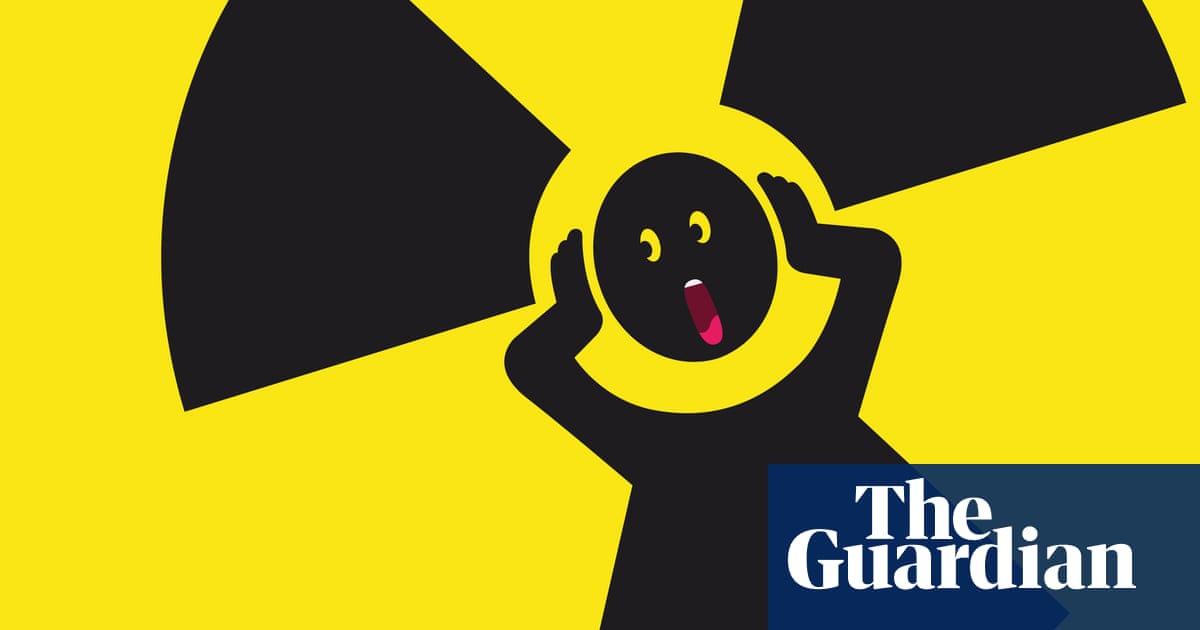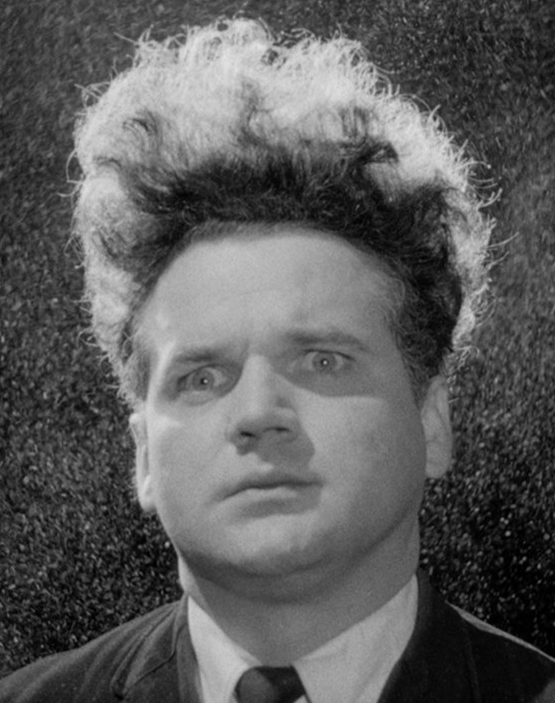Which strawman is the nuclear energy lobby trying to defeat this time?
Across Europe, the median build time since the year 2000 has dragged out to almost a decade. But it’s not a problem with nuclear power per se; it’s a symptom of the west’s chronic inability to deliver large pieces of infrastructure, an ailment that affects everything from laying high-speed railway lines, to building new housing estates, to filling in potholes.
Ah, yes, the problem is all these regulations that checks notes reduce risk (increase safety):
(this safety:)
There’s also a perception that nuclear power is dangerous, yet the data show it’s as safe as wind and solar.
And
Elaborate backup systems won’t cut it, either.
Implying that nuclear energy is NOT an elaborate system is delusional.
Tim Gregory is a nuclear chemist at the UK National Nuclear Laboratory and author of Going Nuclear: How the Atom Will Save the World (Bodley Head).
Boomers
Yes. Give me a bank, insurance, place to build, place to store AND show me how it can run without sibsedies and we can talk. Do the Söder-Challange now

So… to summarize the argument: we have to build nuclear plants, even though they are the most expensive renewable per kWh and they take the longest amount of time to build (even by the author’s “fast” timeline standards) because we don’t have batteries that can store wind and solar energy, even though there are multiple emerging potential solutions that could result in days-long storage capacity.
Not buying it. I don’t buy the “unsafe” argument but I also don’t buy this argument
Edit: this same publication that published this op-ed published a pretty negative review of this book, funny enough: https://www.theguardian.com/books/2025/jun/02/going-nuclear-by-tim-gregory-review-a-boosterish-case-for-atomic-energy
The thing is… nuclear is even more expensive than battery capacity combined with smart power management.
the most expensive renewable
Ftr, Uranium is not renewable.
I don’t buy the “unsafe” argument
The thing is that the well-known nuclear catastrophes, at a minimum all resulted in fairly large areas right in the middle of civilized land being lost to humanity for the foreseeable future. So, even if overall death rate is only somewhat higher than for e.g. wind energy — wind energy does not lead to such devastating local effects. The other thing is, nuclear needs skilled teams to manage plants at all times, even when they’re shut off. As soon as your country goes off its routine because military coup!, nuclear plants become a massive danger. Also, nuclear plants can make for devastating attack targets during a war (obviously the attacker would need to value mayhem and defeat above colonizability).
And finally, nuclear danger is (within human time frames:) eternal because you need to store some materials safely for a very long time; “nuclear semiotics” is an actual thing studied by scientists somehow — yet I’ve never heard of “oil semiotics” or “solar semiotics”.
Ftr, Uranium is not renewable
And Russian Uranium even less so … which is what much if Europe uses.
The way I see things, the unsafe part is more related to how capitalism works, more than anything else. Capitalism is not a safe system.
Super-briefly, time and money related to: planning, maintenance, decommissioning, and last but not least, nuclear waste.
Imo and due to climate emergency, we’d be better putting the money that would go for nuclear towards renewables. Let’s keep in mind that numerous nuclear projects were funded with enormous amounts of money for 10-20 years, to be abandoned before producing any electricity.
Just a few relevant links:
The way I see things, the unsafe part is more related to how capitalism works, more than anything else. Capitalism is not a safe system.
In that regard, the socialist system, at least how it was implemented in Eastern Europe and the USSR, wasn’t any better.
For socialism in the context of the so-called communist countries, I agree with you.
For socialism in the context of the nordic model, I am not sure because I am not well informed about how they have handled nuclear power.
Edit: Regardless of the past, it’s capitalism that has prevailed globally for now, so currently this is what we have to deal with.
Days long doesn’t work if there’s not enough wind and sun, for example in the winter in the north (here in finland we have exhausted our hydro potential already btw)
“Emerging”- what does that mean? Whats the timeline on them? The failure rate? The cost at the scale needed? I mean if you’re gonna complain about nuclear being more expensive then the batteries need to be cheaper necessarily. Also what materials are they made out of?
I suppose you know don’t about the superbattery projects already implemented, e.g. the one in Australia and its huge benefits to their grid?
About sodium based batteries which have become commercially viable in recent years?
And because of the implication also that nuclear reactors produce extreme waste of building materials (e.g. Greifswald, ran for 26 years, dismantling in operation since 35 years and projected to last till 2040 at least, because higher contamination than estimated) and mining for them is at least as bad as for Lithium?
If not ask the search engine/ai of your choice.
And because of the implication also that nuclear reactors produce extreme waste of building materials (e.g. Greifswald, ran for 26 years, dismantling in operation since 35 years and projected to last till 2040 at least
Ah, yes, the good ol’ “force plants to close way before the end of their design lifetime due to anti-nuclear hysteria, and then use that truncated amortization as an excuse to dishonestly claim they were too expensive” argument. Works every time!
Maybe you should look the mentioned case up before making your argument.
Greifswald had 6 blocks in 1990: 4 blocks which were in very bad state, cracks in the pressure chamber with a high probability to release nuclear material into the environment. Due to these faults they were already shut down since 1987, except block 1 which was run against the recommendations of the security agency. To continue running them they would have to be rebuilt, completely. This includes dismantling them which as we now know would have taken many decades! Block 5 and 6 were under construction. (Started in 1970, planned for 1980) But mistakes were made during the construction, postponing it till 1990, when finally no energy company at all wanted to take over the risk of running it.
So Greifswald was shut down. Not to spite you, but because both security of the general population and financial aspects didn’t allow running it anymore. (It had already two near disasters which where kept hidden and only became known because of the fall of the DDR)
I don’t agree with @grue’s at all, but I think we can still agree that Greifswald appears to be an outlier in that it was especially badly built and managed. This fuckup of a plant is probably not indicative of every other plant.
On the one hand, yes it is. On the other hand the general average also does not seem good.
There are many reactors which had similar, but not as bad histories. Kozloduy NPP (BG), Zion Nuclear Power Station (US), Ignalina (LI), Shoreham, Bohunice, Superphénix, … While reactors which have run without noteworthy problems make up not even half of the total, which is far below anything which should be the norm for public infrastructure.
Lets take Germany as example, which fits quite well due to half of the countries having very lax requirements (DDR) and half having strict ones (West-Germany)
- We have 7 Reactors which where built but never operated due to safety concerns (3 in Greifswald)
- We have at least 4 sites (with at least 8 reactor blocks) with major issues, besides Greifswald we have e.g. hydrogen explosions (Brunsbüttel), turbine fires (Gundremmingen A), transformer fires (Krümmel). These are just the ones I found with a quick search.
- We have another 9 reactor blocks with minor issues like Grundmemmingen B (Bavaria), lets pick this one at random and name the minor incidents: 2 Workers killed by boiling steam explosion (1975), short circuit leading to 3m of contaminated water at 80°C in the building (1977), failed sealing leading to automatic shutdown and repair (2008), failed rods emitting 500-fold the allowed amount of radioactive gases into the atmosphere (2011), another 4 incidents which have not yet been made public and really minor issues like value issues.
- We have about 10 with only minor issues. Stretching from Emsland with only 2 known small leaks to Grafenrheinfeld where there were sudden shutdowns and a fire which nearly reached the main reactor but was extinguished in time.
In fact during looking this up I haven’t found a single reactor which ran a significant time without any incident, even if I do not count construction issues which were caught and fixed in time before they resulted in incidents.
Tbf, steam explosions, turbine and transformator fires aren’t exclusive to NPPs. Just nobody cares if these events happen in any other thermal power plant.
The incidents exclusive to NPPs are those where (potentially) radioactive substances are emitted into the environment.
If so it would supply just New South Wales for only 20 minutes. Hardly seems to be on the verge of solving grid scale storage.
Now to the word “emerging”
This was built entirely in 16 months, from groundbreaking to connection to the grid. For the cost of a single nuclear reactor you can build 30 of these. And opposed to nuclear technology batteries are still making remarkable progress in their affordability.
Edit: Btw the battery also uses below 0,5% of the area of a usual nuclear plant.
How often do you think it would need to supply a whole state? Australian states are massive.
I’m in NSW, and from memory, I can think of a few power outages that took down a few tens of thousands of homes for a few days. Most are much smaller. That’s in a state with a couple of million homes. So at most a few percent of the state. So even in a worst case scenario maybe you still get a day at full power. If you ration it out to essential services, then a lot longer.
This is all ignoring the fact that most outages are grid related, not generation related, which means that nuclear would be of no help, but a somewhat distributed battery backup system could be massively useful.
Unfortunately nuclear power plants would lead to higher bills for electricity as it would be up to the people to recoup the cost for building them.
Renewables are better.
With all the advantages renewables have (please use and develop them!), there are some instances where they can’t reasonably be used.
For example, I live in a city of 5 million people that gets very little direct sunlight (weather is cloudy most of the time + city is located 60° North), has highly irregular seasonal winds, has rivers too small to make hydro make sense on such a scale, and barely has good hills for pumped hydro. It is almost exclusively powered by nuclear energy, because under these circumstances, there’s barely a greener alternative.
There is also the need to have a backup power source for most solar/wind installations, as through some parts of the year they can only provide negligible output.
Finally, some regions might require temporary power - either due to such seasonal downtimes, or because main grid has failed. For that, Russia and China operate vessels with onboard nuclear power plants to source energy through these periods - and then move on to help somewhere else.
This is the first time I’ve ever read of China or Russia using “vessels with onboard nuclear power plants to source energy through these periods - and then move on to help somewhere else.”
I searched and cannot find any source to back this claim, do you have one?
Because the only vessels I know of with onboard nuclear reactors are naval aircraft carriers and submarines, and neither of those ship classes are designed to deliver power to shore.
Sure, here’s a Wikipedia article:
https://en.m.wikipedia.org/wiki/Floating_nuclear_power_plant
Here’s IAEA:
Aside from that, nuclear power is used in some of the icebreakers since the Soviet era:
https://en.m.wikipedia.org/wiki/Nuclear-powered_icebreaker
Also, I was under the impression China has such ships deployed, while they are actually being built. Russia has an operational one.
Thanks for the links. So there is only one Russian floating nuclear power plant and it has a permanent location in Chukotka. This isn’t much like what you described to be honest.
It’s a relatively new technology, and such is its proposed use.
The Russian plant is stationed there for the time being, yes, but it could be moved elsewhere, which is the beauty of it. It’s just that Chukotka relies on it for now.
For example, I live in a city of 5 million people that gets very little direct sunlight (weather is cloudy most of the time + city is located 60° North), has highly irregular seasonal winds, has rivers too small to make hydro make sense on such a scale, and barely has good hills for pumped hydro. It is almost exclusively powered by nuclear energy, because under these circumstances, there’s barely a greener alternative.
I heard they’re trying out these new devices that can transport power over long distances. Apparently you just need some big ass towers and long cables. Super cool cutting edge stuff.
(The wind is always blowing somewhere.)
Sure, but transporting power over very long distances comes with two issues: losses and disruptions.
Seasonal winds, when they actually happen, are very strong, commonly breaking the cables and necessitating repairs. The longer the cable - the higher is the chance something will break somewhere, and leaving a city of 5 million without power is a no-go. So, the city uses nearby power source (as close as it is allowed for a nuclear plant to stand next to a huge city) and primarily underground cables.
Also, the energy losses associated with such power transfer will be quite massive even at very high voltages. Which, again, isn’t cool when the end consumer needs up to 9 GW of power at any given moment.
Sure, but transporting power over very long distances comes with two issues: losses and disruptions.
It’s what we do now. Most cities don’t have dedicated power plants right next to them, we have national and even multinational grids. If it works for fossil (and nuclear) plants, it works the same for renewables.
Most cities are substantially smaller and grids there can be made more cheap and reliable without elements getting so much in the way.
I agree we should do more to center grids around renewables even if they’re far away; but there are some instances where this just isn’t practical, and nuclear technology offers a reasonably eco-friendly (as compared to fossil) way out.
Using nuclear power allows the city not to burn 30 million tonnes of coal every year (i.e. the biggest cargo ship on Earth every 5 days), which I would say is a win, given the circumstances.
Whenever people try to sell nuclear power, they simply “forget” to tell us…
- How much co2 is produced by mining and enriching uranium and how much water is used so it can be used for reactors
- How expensive it is to build a plant, and how much building them will go over budget (see UK)
- That nuclear plants are uninsurable
- Because of the above, tax payers are responsible for the costs of clean up and dismantling because that is not factored it
- That nuclear plants have to shut down when it’s too hot
- Transport of used nuclear pellets is expensive
- Most countries struggle with final storage of nuclear waste
- That nuclear plants are often more contaminated and more expensive to dismantle than anticipated
I hope thorium reactors become a reality soon, they’ll probably fix or lower most of your concerns with current uranium reactors.
People should stop trying to manifest new reactor types. Especially in the face of climate change which really doesn’t leave us much time before shit hits fans even harder. Usually, the lead time on new reactor designs is even longer than on other reactor designs and half the promised features don’t materialize, and you’ll likely learn that the private company building the plant has accidentally forgotten one crucial element on the spec-sheet.
Every nuclear power plant in the United States carries no fault insurance by law. They literally are all insured every single one
The rest of these are all just Big Oil talking points because they don’t want competition
Today, 700 million people live in extreme poverty (defined as living on less than $2.15 per day). They won’t climb out of it without access to more energy. Making as much energy as possible available to as many people as possible ought to be a defining goal of the 21st century.
And what energy sources can be safely and cheaply deployed in Burundi, Somalia, Liberia etc? Nuclear or solar?
Tim Gregory is a nuclear chemist at the UK National Nuclear Laboratory
I see.
Never understood the freakout over nuclear … when you measure up the long term statistics
Gas/Oil/Coal have killed more people over the past 100 years than nuclear ever did (even if you threw in the bombing deaths in Japan in WWII)
The deaths caused by gas/oil/coal are just not as dramatic … all those people died from global pollution, poisoning, early death, shortened lives, lung problems, bad health … and all by the millions
I think all of us here agree that fossil energy sucks. Please instead compare against wind/solar/batteries, not fossil energy.
The problem is that the world needs a giant energy source as we transition in between … before we get to the point of using fully or primarily wind/solar/batteries, the world has to use several decades or a century or more of some big source of energy and most governments and industries are just banking on forcing everyone to stay on fossil fuels
It makes no sense at all to use this argument to reason in favor of building out energy generation that needs a decade+ to come online and which only ever works with massive corporate and state support.
Solar starts to work at the scale where a random dude in Pakistan screws a couple of panels on their roof without any permits. Nuclear starts to work at the scale where either a corporate behemoth (like GE or Siemens or Hitachi) or a multi-billionaire-financed startup sells a concept to a state-subsidized utility and then they collectively go through years of permits and construction.
Even if solar were a little more expensive per kWh at scale (which is mostly a matter of tuning the calculations the way you prefer), it’s just so! much! easier! to roll out.
And no, we don’t need an ever-increasing supply of power. What we actually need is for people to have a standard of life that they’re happy with. Which has some relation to use of energy but unlike what the article suggests, that correlation is nowhere near linear. People in the US don’t have proper healthcare, they live in sad places cut apart by vast car infrastructure, their cities are still suffering from the aftermath of redlining, etc. — their energy consumption is higher than in many parts of the EU, yet their standard of living is, on average, a lot lower.
The general populace isn’t looking at statistics, they’re looking at scary news stories
The public is never good at stats, or complex ideas that cannot be converted into a good old fashioned sound bite.
Maths hardly ever change major policy by themselves. Often it’s only an accident of political necessity when policy is backed by statistics or science
The general public is one thing, but that doesn’t excuse the positions of activist organizations like Greenpeace that should’ve been better-informed.
Often, but not as a rule, progressive organizations age badly
And the article image of a screaming person.
We certainly cannot afford not to go full renewables, like yesterday.
Some early Fords around the Model T era had a switch on them to flip between running on ethanol or gas. The idea being that farmers would brew their own fuel as needed. Big Oil didn’t like that, and so it went away. Where we are now isn’t thanks to science and technology, just pure greed off the backs of everyone.
It’s about independence from any monopoly. Energy companies own the field, equipment, transportation, electricity generation, and distribution. I’d like my own generator and storage to lower costs.
Nuclear perpetuates the same system where safety is cut as a cost saving measure. You know they would be less safe if they legally could. Also the infrastructure is in bad shape to move radioactive waste by rail- ask Ohio.
Also you are directly dependent on the country where you get your uranium from. Which for Europe was/is mostly Russia. That also does not seem a good idea.
Akchually, Czechoslovakia used to export uranium to the USSR because it had the greatest, most accessible reserves of the Eastern Bloc.
That may be correct, but recently it looked like this:

The Czech reserves (which are still more than US’s) were probably just more readily available or easier to purify.
Anyway, I’d prefer this list because your chart is EU supply only.
Interesting, but you just have to keep in mind the definition of reserve, where profitability is part of the calculation. Also reserve does not tell much about extraction.
East Germany, the GDR, was the 4th largest producer of uranium ore in the world. The uranium was mined in the Soviet run Wismuth (later Soviet-German) facilities on the German side of the Ore Mountains.
Can we afford not to be?
No, but that won’t stop people from acting like idiots and giving in to FUD. Look at how many millions are on Xitter, Facebook, and Reddit.










